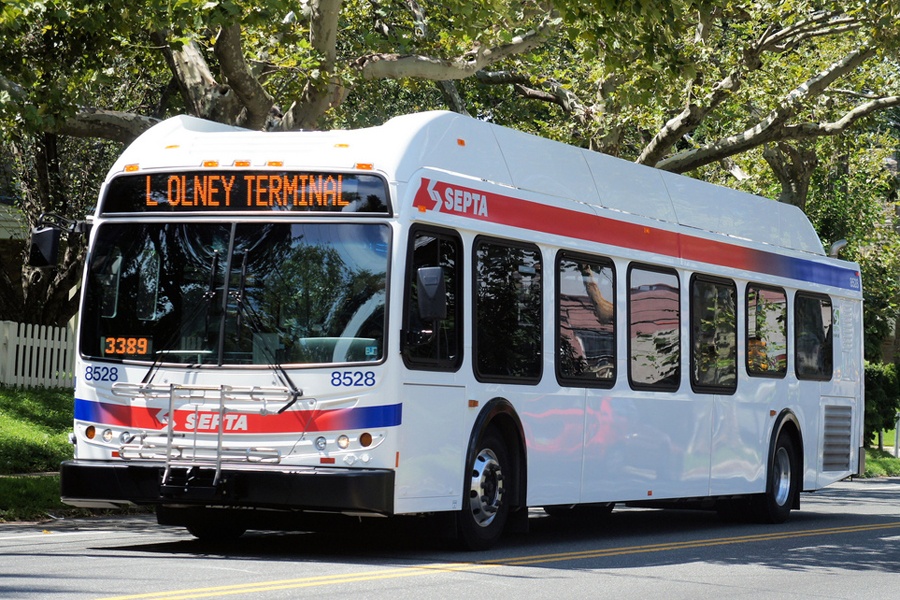How SEPTA’s Transfer Policy Makes Poorest Riders Pay Most Expensive Fares
Philadelphians spend a larger proportion of their income on transit than people in New York, D.C., and Chicago. The burden is especially heavy on cash users, who also tend to be SEPTA’s poorest riders.

Photo: SEPTA.
As anyone who rides SEPTA knows, the past few years have been marked by considerable changes to the way you pay for trips, as the agency has transitioned away from Stone Age (or would it be Bronze Age?) tokens to a modern touch card. But the rollout of Key Cards was notoriously slow — so much so that the first cards began to expire before they could even be used throughout the system — which means people have continued to pay with various methods: cash, monthly passes on SEPTA Key, Travel Wallet on SEPTA Key, Regional Rail swipe cards, or, yes, even tokens.
The result is a rather convoluted system of competing currencies in which two riders on the same commute could be paying entirely different amounts for their trips simply based on how they choose to pay, according to a report released by the Pew Charitable Trusts on Wednesday analyzing the state, and equity, of Philly’s transit fares.
Transfer Fees Disproportionately Affect Low-Income Riders
On any given weekday, people take 819,000 trips on SEPTA. About a quarter of Philadelphia residents get to work using public transit, and of that group, 44 percent earns less than $25,000 a year.
Most every mass transit system in the country has non-uniform fares to a certain degree. Some cities, like Washington, D.C., charge riders based on distance traveled. Others, like SEPTA or the MTA in New York City, have monthly pass options that become cheaper than the base fare, assuming you’re taking the subway every week on your commute.
But that’s not the issue with SEPTA. Even though our base fare of $2.50 is cheaper than that of most other cities, the pricing changes when you have to make a transfer, say, between the El and a bus. It used to be the case that you could pay the $2.50 base fare with cash, then transfer for a discounted $1 rate. SEPTA eliminated that cash transfer discount last summer, while maintaining it for those who use a Key Card. It’s pretty clear the rationale here was simply to push as many people onto the new technology as possible. But the impact on cash users was acute: Suddenly, they’d have to pay two separate full $2.50 fares for a one-way trip.
Here’s why that matters: Fourteen percent of all SEPTA riders pay with cash, and according to a survey by the Delaware Valley River Regional Planning Commission, 17 percent of Philadelphians with an income under $25,000 use cash on their commute — twice the rate of higher-income riders. That survey was performed in 2010, before the elimination of cash transfers, so the numbers may have shifted in response; but, as Pew notes, cash remains a popular method of payment among commuters to this day.
Eliminating cash transfers appears to have a disproportionate impact on poor riders in part due to SEPTA’s service patterns. While many of the city’s less affluent neighborhoods — particularly in North and West Philly — are well-served by the Market-Frankford El and the Broad Street Line, Pew notes something crucial: the majority of these residents don’t actually commute to Center City. Indeed, 65 percent of those with a household income less than $35,000 commute somewhere outside Center City. In many cases, that means they’re then forced to transfer between buses.
You might be thinking, why don’t people just buy a Key Card and load it up with cash, then? But nearly 30 percent of the population in Philly is unbanked or underbanked, meaning they have limited access to traditional financial institutions. Filling up a Key Card isn’t always as simple as hopping on the website and charging a credit card; it becomes a considerably less convenient if each reload requires a trip to a SEPTA sales location.
SEPTA Must Modify Its Bus Routes
SEPTA has been considering a change to its long-suffering bus routes, and for good reason. Between 2017 and 2018 the agency lost a total of 15 million bus trips, leaving bus ridership at the lowest levels since 2002. (Keep in mind that, despite the decline, buses still constitute the largest portion of SEPTA trips.)
Any changes to bus routes will unfold over years, and according to a preliminary analysis by SEPTA, the modifications would only really affect redundancies in the system — something like 10 percent of current bus lines. It remains true that the most efficient use of bus resources is often to have routes that follow the grid of the city. That’s fine, but if someone is commuting in a non-straight direction, well, then a transfer is more than likely going to be necessary. Which brings us back to the fundamental transfer fare problem.
The good news is that SEPTA at least seems attuned to this reality. In its own planning notes for a bus-route revamp, the agency makes the following recommendation: “Remove the fare penalty for transfers to encourage more rides to connect, which allows riders to get more value from the frequent grid of routes in the system.”
SEPTA spokesperson Andrew Busch says that could happen in the next year, when the agency will propose its next regularly scheduled fare increase. “SEPTA strives to maintain the lowest possible fares while achieving a balanced budget,” Busch wrote in a statement. “With respect to the report’s findings regarding the impact of transfer fees and job access, SEPTA has committed to studying both issues.”
If SEPTA does manage to eliminate the transfer fee — which currently creates $14 million of annual revenue, or 3 percent of the agency’s budget — it will be a critical change. Pew found that Philadelphians — in large part due to the city’s 26 percent poverty rate — already spend a larger proportion of their income on transit than people in New York, D.C., Chicago, Los Angeles, and Boston. The last thing SEPTA should be doing, then, is placing even more economic burden on its poorest riders.
This post has been updated to correct the percentage of SEPTA riders who pay with cash.


